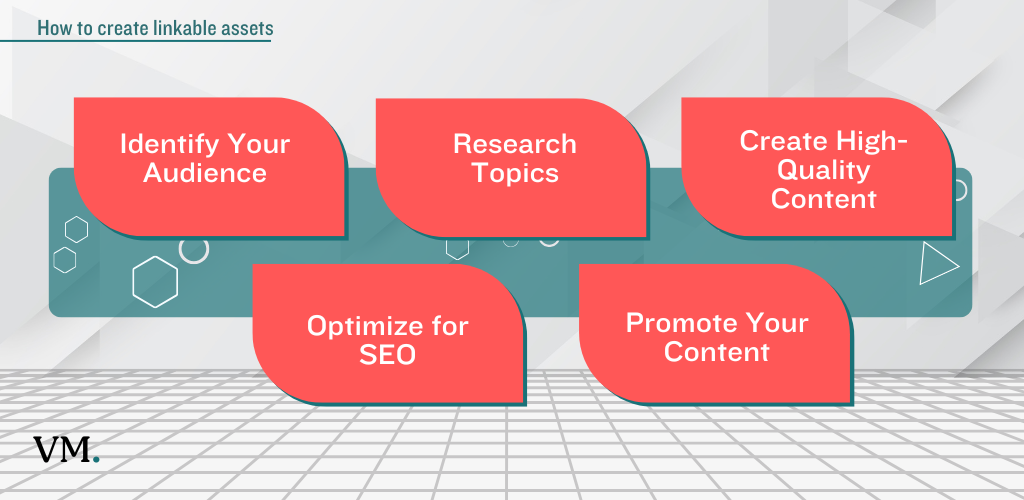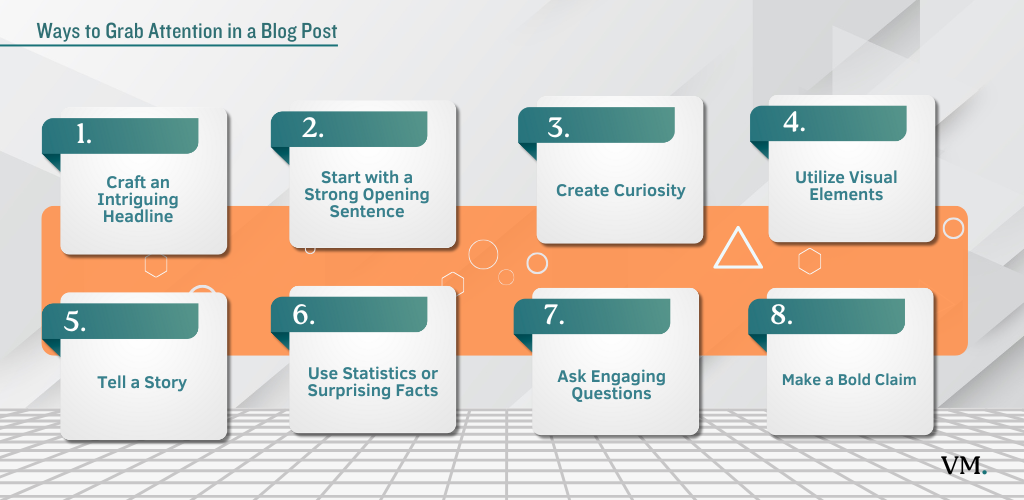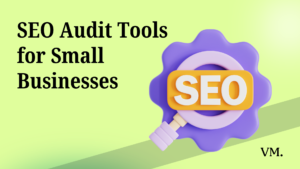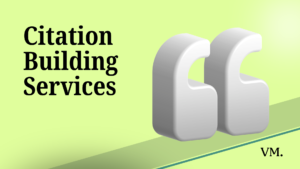Backlinks are vital for improving your website’s SEO and driving organic traffic. However, creating content that naturally attracts these links can seem daunting. Imagine crafting pieces that not only engage your audience but also compel other websites to link back to you.
This guide will walk you through the process of creating linkable assets that enhance your online presence without sacrificing quality.
What are Linkable Assets?
Linkable assets are high-quality pieces of content designed specifically to attract backlinks from other websites. These can include infographics, comprehensive guides, research reports, or engaging videos. By defining linkable assets clearly, we ensure that you understand their significance in building your online authority and traffic.
Reasons You Need to Know How to Create Linkable Assets
Understanding how to create linkable assets is crucial for anyone looking to enhance their online visibility. Here’s why:
- Boosts SEO: High-quality backlinks improve your search engine ranking.
- Increases Authority: Well-researched content establishes your brand as a thought leader.
- Drives Traffic: More backlinks lead to increased referral traffic.
- Enhances Engagement: Valuable content keeps your audience engaged and encourages sharing.
Creating linkable assets is not just a tactic; it’s a strategic approach to content marketing that can yield long-term benefits.
Step-by-Step Instructions to Create Linkable Assets
Creating effective linkable assets involves a structured approach. Here’s how you can do it:
- Identify Your Audience
- Research Topics
- Create High-Quality Content
- Optimize for SEO
- Promote Your Content
This method combines creativity with strategic thinking, ensuring your content stands out and attracts links.

Step 1: Identify Your Audience
Understanding who your target audience is will guide your content creation. Consider their interests, pain points, and what type of content they are likely to share.
Step 2: Research Topics
Use tools like Google Trends or BuzzSumo to find trending topics in your niche. Look for gaps in existing content where you can provide unique insights or information.
Step 3: Create High-Quality Content
Develop content that is informative and visually appealing. Incorporate elements like images, videos, and infographics to enhance user experience.
Step 4: Optimize for SEO
Ensure your content is optimized for search engines by using relevant keywords, meta descriptions, and alt tags for images. This helps improve visibility and increases the chances of attracting backlinks.
Step 5: Promote Your Content
Share your linkable assets on social media, email newsletters, and relevant online communities. Engage with influencers in your niche who may be interested in sharing your work.
Key Considerations For Successfully Creating Linkable Assets
When creating linkable assets, consider the following insights:
- Quality Over Quantity: Focus on producing fewer high-quality pieces rather than numerous mediocre ones.
- Stay Updated: Regularly update your content to keep it relevant and accurate.
- Engage with Your Audience: Encourage feedback and interaction on your content to foster community engagement.
Taking it to the Next Level: How to Enhance Your Linkable Assets
Consider collaborating with industry experts for guest posts or interviews to further improve your linkable assets. This not only adds credibility but also expands your reach through their networks.
Alternatives to Creating Linkable Assets
Consider alternatives like podcasts or webinars if traditional blog posts or infographics don’t resonate with your audience. These formats can also attract links while providing valuable insights in a different medium.
What Are Some Effective Ways to Grab Attention in a Blog Post
Here are some effective ways to grab attention in a blog post:
-
Craft an Intriguing Headline: Use action phrases, emotional words, and hyperbole to create headlines that stand out. For example, titles like “The Secret to Effortless Productivity” or “10 Mind-Blowing Facts You Didn’t Know About Space” can pique curiosity and encourage clicks.
-
Start with a Strong Opening Sentence: The first sentence should hook readers immediately. Consider starting with a bold statement, an intriguing question, or a surprising fact that compels them to read further.
-
Create Curiosity: Use cliffhangers or tease the content in your introduction. Posing a question related to the topic can engage readers’ minds and make them eager to find the answer.
-
Utilize Visual Elements: Incorporate striking images or infographics at the beginning of your post. Visuals can capture attention quickly and break up text, making the content more engaging.
-
Tell a Story: Starting with a personal anecdote or a relatable story can draw readers in emotionally. This approach helps create a connection and keeps them interested in your message.
-
Use Statistics or Surprising Facts: Presenting compelling data or unexpected facts early on can intrigue readers and lend credibility to your post. For example, starting with “Did you know that 70% of people struggle with procrastination?” can immediately engage your audience.
-
Ask Engaging Questions: Pose questions that resonate with your audience’s interests or challenges. This not only grabs attention but also encourages readers to reflect on their own experiences related to the topic.
-
Make a Bold Claim: Starting with a controversial statement or making a strong promise can provoke thought and discussion, enticing readers to continue exploring your argument.
By implementing these strategies, you can effectively capture and maintain your audience’s attention throughout your blog post.

Techniques for Captivating Your Audience in Blog Posts
In the crowded world of online content, grabbing your audience’s attention is crucial for success. With countless blogs vying for readers’ interest, employing effective techniques can set your writing apart. This chapter explores various methods to captivate your audience, ensuring they not only read your posts but also engage with and share your content.
| Technique | Description | Example |
|---|---|---|
| Compelling Subheadings | Use subheadings to break up text and guide readers through the post. | "5 Surprising Benefits of Meditation" |
| Engaging Lists | Present information in list format to make it digestible and easy to skim. | "Top 10 Tips for Effective Time Management" |
| Interactive Elements | Incorporate polls, quizzes, or surveys to engage readers actively. | "What Type of Learner Are You? Take Our Quiz!" |
| Quotes from Experts | Include relevant quotes from industry leaders to add authority and interest. | "As Steve Jobs said, 'Innovation distinguishes between a leader and a follower.'" |
| Call-to-Action (CTA) | Encourage readers to take action at the end of the post, fostering engagement. | "Share your thoughts in the comments below!" |
By implementing these techniques, you can enhance the readability and engagement of your blog posts. Each method serves to draw readers in, making them more likely to stay on your page longer, interact with your content, and return for future posts. Captivating your audience is not just about what you say but how you present it—so experiment with these strategies to find what resonates best with your readers.
Wrapping Up and My Experience With Creating Linkable Assets
Creating linkable assets has transformed my approach to content marketing. By focusing on quality and relevance, I’ve seen significant improvements in my website’s authority and traffic. Embrace this strategy, and you too can build a robust online presence that attracts valuable backlinks effortlessly.
FAQ
Linkable assets are high-quality pieces of content designed specifically to attract backlinks from other websites. They can take various forms, including infographics, comprehensive guides, videos, or interactive tools. The importance of linkable assets in SEO cannot be overstated. They serve as a cornerstone for building a natural link profile, which is essential for improving your website's authority and visibility in search engine results.
The primary reason linkable assets are crucial is that they provide value to your audience. When you create content that is informative, engaging, and relevant, it naturally encourages other websites to link back to you as a credible source. This not only drives referral traffic but also enhances your site's credibility in the eyes of search engines. As more authoritative sites link to your content, your domain authority increases, which can lead to higher rankings in search results.
Moreover, linkable assets can help establish your brand as an industry leader. When you produce unique and insightful content that addresses specific audience needs or interests, you position yourself as a go-to resource in your niche. This reputation can lead to more organic backlinks over time as others in your industry recognize the value of your work.
There are several types of content that can be classified as linkable assets, each with its unique strengths and appeal. Here are some common formats:
- Infographics: These visually appealing representations of data simplify complex information and are highly shareable. Their design makes them ideal for attracting backlinks because they provide a quick way for readers to digest information.
- Comprehensive Guides: In-depth articles or eBooks that cover a topic thoroughly can serve as valuable resources for readers. When you provide detailed insights and actionable tips, other websites are more likely to reference your guide as a reliable source.
- Research Reports: Original research or surveys that uncover new data can attract significant attention from other content creators and journalists looking for credible statistics to support their own articles.
- How-To Articles: Step-by-step guides that help readers solve specific problems or learn new skills are often linked back to by those who find the information useful.
- Interactive Tools: Calculators, quizzes, or assessments that engage users can be highly effective linkable assets. Their interactive nature encourages sharing and linking.
- Videos: Engaging video content that provides valuable insights or entertainment can also attract backlinks, especially if it’s informative or offers a unique perspective on a topic.
By diversifying the types of linkable assets you create, you can appeal to different segments of your audience and increase the likelihood of earning backlinks from various sources.
To maximize the chances of your linkable assets attracting backlinks, consider implementing the following strategies:
- Focus on Quality: Ensure that every piece of content you create adheres to high standards of accuracy and presentation. High-quality content is more likely to be shared and linked back to by others.
- Choose Evergreen Topics: Select subjects that remain relevant over time rather than trending topics that may quickly become outdated. Evergreen content continues to attract backlinks long after it’s published.
- Optimize for SEO: Incorporate relevant keywords throughout your content to enhance its visibility in search engines. Use SEO best practices such as meta descriptions, alt tags for images, and internal linking to improve discoverability.
- Promote Your Content: Actively share your linkable assets across social media platforms, email newsletters, and relevant online communities. The more exposure your content gets, the higher the chances it will be linked back to by others.
- Engage in Outreach: Reach out to influencers, bloggers, and websites within your niche to inform them about your new content. Personalize your outreach efforts by explaining how your asset could benefit their audience.
- Monitor Performance: Use analytics tools to track how well your linkable assets perform in terms of traffic and backlinks earned. This data can help you refine future strategies based on what works best.
By following these guidelines, you can create compelling linkable assets that not only resonate with your audience but also earn valuable backlinks over time.
Measuring the success of your linkable assets involves tracking several key performance indicators (KPIs) that reflect both engagement and backlink acquisition:
- Backlink Count: Monitor how many backlinks each asset earns over time using tools like Ahrefs or Moz. A higher number of backlinks indicates that your asset is being recognized as valuable by other websites.
- Referral Traffic: Analyze traffic coming from external links using Google Analytics. This metric helps you understand how many visitors are being directed to your site through links from other domains.
- Social Shares: Track how often your content is shared on social media platforms using tools like BuzzSumo or native analytics on social networks. High share counts often correlate with increased visibility and potential backlinks.
- Engagement Metrics: Evaluate metrics such as time on page, bounce rate, and comments received on the post to gauge reader engagement with the asset itself. High engagement suggests that readers find value in the content.
- Keyword Rankings: Monitor how well your linkable asset ranks for targeted keywords over time using SEO tools like SEMrush or Google Search Console. Improved rankings indicate better visibility in search results due to earned backlinks.
Creating linkable assets can be a rewarding endeavor, but several common pitfalls can hinder your efforts. Here are some mistakes to watch out for:
- Neglecting Audience Research: One of the biggest mistakes is failing to understand your target audience's needs and interests. If you create content that doesn't resonate with them, it’s unlikely to attract backlinks. Conduct thorough research to identify what topics, formats, and types of content your audience finds valuable.
- Overlooking Promotion: Even the best content can go unnoticed without proper promotion. Many creators assume that simply publishing their linkable asset will lead to backlinks, but this is rarely the case. Develop a robust promotional strategy that includes sharing on social media, reaching out to influencers, and engaging in relevant online communities.
- Ignoring SEO Best Practices: Failing to optimize your content for search engines can limit its visibility. Ensure you incorporate relevant keywords, use proper headings, and include meta descriptions. Additionally, pay attention to technical SEO aspects like site speed and mobile-friendliness, as these factors can impact user experience and search rankings.
- Creating Low-Quality Content: Quality is paramount when it comes to linkable assets. Content that is poorly written, lacks depth, or is riddled with errors will not only fail to attract backlinks but can also damage your credibility. Invest time in research, editing, and design to ensure your content meets high standards.
- Not Updating Content Regularly: The digital landscape is constantly evolving, and information can quickly become outdated. Failing to update your linkable assets can lead to a decline in their relevance and effectiveness over time. Regularly revisit your content to refresh statistics, add new insights, or improve the overall presentation.
By avoiding these common mistakes, you can enhance the effectiveness of your linkable assets and increase their potential for attracting valuable backlinks.
Promoting your linkable assets is crucial for maximizing their reach and potential for earning backlinks. Here are several effective strategies for promoting your content:
- Leverage Social Media: Share your linkable assets across various social media platforms where your audience is active. Create eye-catching posts with engaging visuals and compelling captions that encourage clicks. Consider using paid advertising on platforms like Facebook or Instagram to reach a broader audience.
- Engage with Influencers: Identify influencers or thought leaders in your niche who might find your content valuable. Reach out to them with a personalized message explaining why you believe they would appreciate your asset. If they find it useful, they may share it with their followers or link back to it in their own content.
- Utilize Email Marketing: If you have an email list, send out newsletters highlighting your new linkable asset. Craft a compelling subject line and provide a brief overview of what readers can expect from the content. Encourage recipients to share it with their networks if they find it valuable.
- Participate in Online Communities: Engage in forums, discussion groups, or online communities related to your niche (such as Reddit or Quora). Share insights from your linkable asset where relevant and include a link back to the full content when appropriate. Be sure to follow community guidelines regarding self-promotion.
- Guest Blogging: Write guest posts for reputable blogs in your industry and include links back to your linkable asset within the content or author bio. This not only drives traffic but also helps build relationships with other bloggers who may consider linking back in the future.
- Create Shareable Graphics: Design visually appealing graphics or snippets from your linkable asset that others can easily share on social media or their websites. Providing share buttons on your content makes it easy for readers to spread the word.
By employing these promotional strategies effectively, you can enhance the visibility of your linkable assets and increase the likelihood of attracting valuable backlinks.
The frequency of creating new linkable assets depends on several factors, including your industry, resources, and overall content strategy. However, here are some guidelines to help you determine an appropriate cadence:
- Quality Over Quantity: Focus on producing high-quality content rather than churning out numerous pieces quickly. A well-researched and thoughtfully crafted asset is more likely to attract backlinks than several mediocre ones.
- Assess Your Resources: Consider the time and resources available for creating new content. If you have a small team or limited budget, it may be more effective to produce fewer pieces but invest more effort into each one.
- Monitor Industry Trends: Stay attuned to changes and trends within your industry that may warrant new content creation. If a topic gains traction or if there are shifts in audience interests, it’s essential to respond by developing relevant linkable assets promptly.
- Evaluate Performance: Regularly assess the performance of existing linkable assets using analytics tools. If certain pieces are still driving traffic and earning backlinks after several months or years, consider updating those instead of creating entirely new ones.
- Set a Content Calendar: Establish a content calendar that outlines when you plan to create new linkable assets based on strategic goals and seasonal trends relevant to your audience's interests.
In general, aim for consistency while maintaining quality—whether that means producing one high-quality asset per month or several throughout the year—ensure that each piece aligns with your overall strategy and audience needs.
Absolutely! Repurposing existing content into new linkable assets is an effective strategy that allows you to maximize the value of what you’ve already created while reaching different audiences or formats. Here are some ways you can do this:
- Transform Blog Posts into Infographics: Take key points or statistics from a popular blog post and create an infographic that visually represents this information. Infographics are highly shareable and can attract backlinks from sites looking for visual data representation.
- Create Video Content: Convert written guides or articles into video formats by summarizing key points or demonstrating concepts visually through tutorials or presentations on platforms like YouTube or Vimeo.
- Compile Ebooks from Series of Posts: If you've written multiple blog posts on related topics, consider compiling them into an ebook format that offers comprehensive insights on a subject matter—this can serve as an effective lead magnet while also acting as a valuable resource for others in your niche.
- Develop Slide Decks: Use existing articles as scripts for presentations or slide decks that can be shared on platforms like SlideShare or LinkedIn—these formats often attract links from professionals seeking informative presentations on specific topics.
- Update Old Content: Refresh outdated blog posts by adding new data, insights, or examples; this not only improves their relevance but also increases their chances of attracting backlinks again as they become more valuable resources.
Repurposing existing content not only saves time but also helps reinforce key messages across different formats while reaching diverse audiences who may prefer consuming information in various ways.
Building relationships with other bloggers is essential for creating backlink opportunities and fostering collaboration within your niche community. Here are some strategies for establishing meaningful connections:
- Engage on Social Media: Follow bloggers in your niche on social media platforms such as Twitter, LinkedIn, Instagram, or Facebook; actively engage with their posts by liking, commenting thoughtfully, and sharing their content when appropriate—this helps build rapport over time.
- Comment on Their Blogs: Leave insightful comments on other bloggers’ posts that add value to the conversation; avoid generic comments—be specific about what resonated with you in their article; this shows genuine interest in their work which can lead them back to check out yours.
- Offer Guest Posts: Reach out with proposals for guest blogging opportunities where you provide valuable content tailored specifically for their audience; this not only helps you gain exposure but also establishes credibility within their community.
- Collaborate on Projects: Suggest collaborative projects such as co-hosting webinars or creating joint resources; working together fosters mutual benefit while providing opportunities for cross-promotion among both audiences.
- Network at Events: Attend industry conferences, webinars, or local meetups where you can connect face-to-face (or virtually) with other bloggers; personal interactions often lead to stronger connections than online-only communication.
- Be Helpful: Offer assistance by sharing resources that could benefit them (like tools they might find useful) without expecting anything in return; being genuinely helpful builds goodwill which may lead them back toward linking opportunities later down the line.



